With a top prize of €1,000 and two €500 prizes on offer in our #makeonechange safety competition, we’ve been inundated with entries from farmers showing the farm safety changes they have made on their farms.
The idea behind the competition is that if we can encourage small changes on thousands of farms across the country next week, we will make our farms safer and in turn keep our families safe.
With so many entries flooding in, we have decided to extend the closing date for the competition to 5pm on Tuesday 10 August 2021.
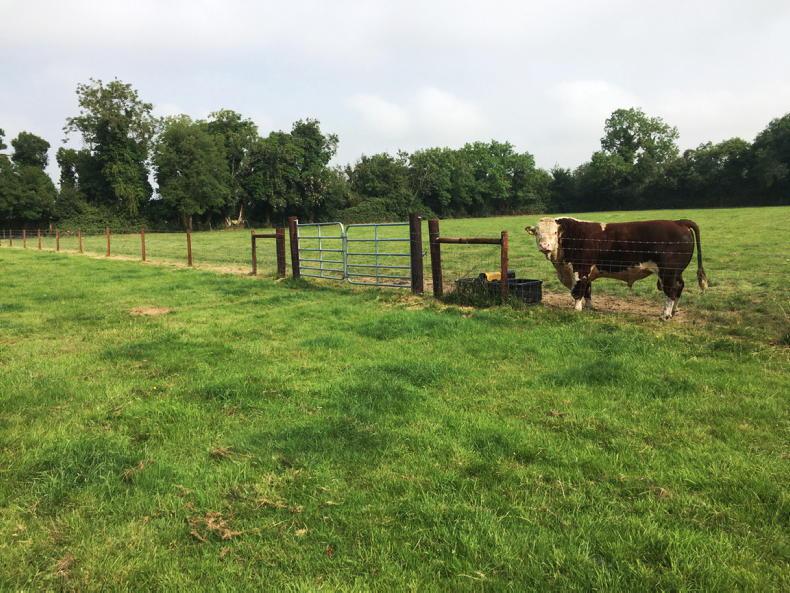
Lorcan Ward, dedicated bull paddock.
Lorcan Ward from Dunboyne, Co Meath told the Irish Farmers Journal that the biggest improvement to safety he has made on the farm was to dedicate a paddock solely for the bull to be kept in before and after the breeding season.
“The previous field he was kept in meant climbing over a gate to check the water trough and having to drive into the field if a silage bale was needed. Now the bull can be easily seen behind a large fence, making sure he can’t get out but, just as importantly, other animals can’t get in,” he said.
“The water trough is easily viewable. There is an electric fence at waist height to stop him damaging the fence. There is another entrance at the far side of the paddock where a barrier is accessible without having to drive into the field. This also serves as something for the bull to scratch on. From now until housing, there is zero need to enter the field anymore.”
Sliding gate for
cattle box
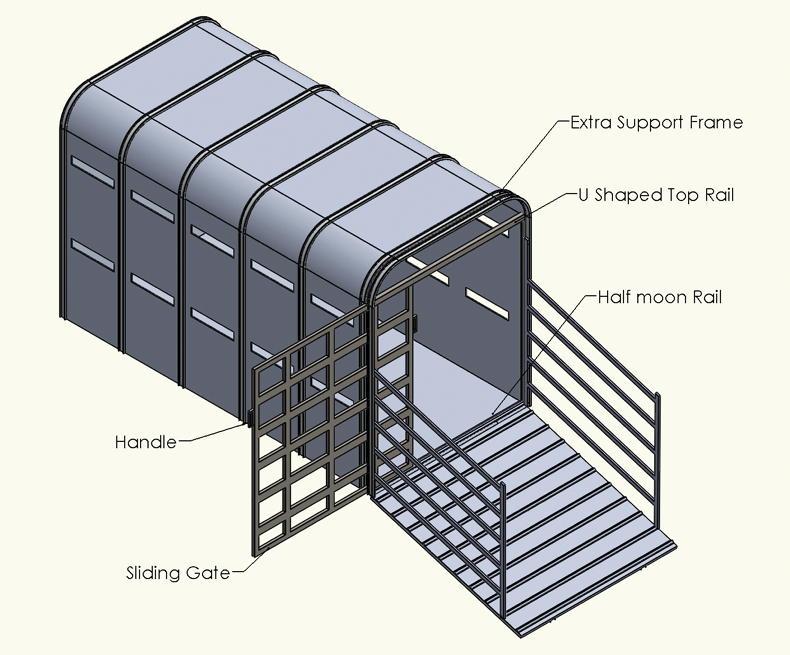
Kevin Carey, sliding gate.
Kevin Carey from Thurles, Co Tipperary, is a technical graphics and woodwork teacher and part-time beef farmer.
He combined his two passions to design this safety device aimed at making the loading and unloading of cattle from a box easier and safer for the farmer.
“The idea came to me when loading cattle into a box and one of them kicked back as I was closing the gate behind them. This opened my eyes to how simple an accident could happen and the dangers of walking up a ramp to close a gate on a box,” he told the Irish Farmers Journal.
“My idea is simple. A sliding gate which can slide left or right, depending on loading position or removed entirely if not needed.
“One person can herd the cattle into the box while another can slide the gate closed from a safe position, eliminating the need to walk up the ramp,” he explained.
“A lock on either side of the box will secure the gate and prevent it from sliding too far when closing. A top U-section rail and bottom half-moon profile slider allow the gate to move freely while offering maximum support. An extra external frame support is also fitted to the box where the sliding gate enters and exits the main frame.”
Carey said his design can be easily fitted in the manufacture stage of a new box or retrofitted to an older box.
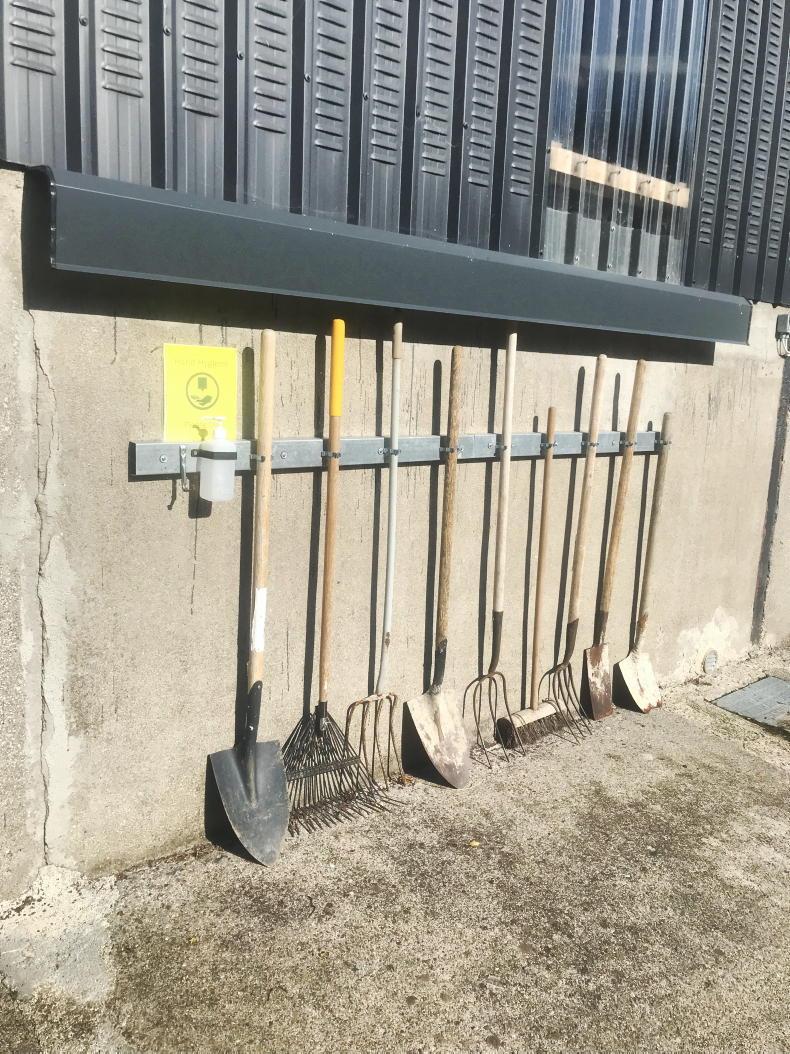
Edward Earle, tidy yard.
Edward Earle from Gorey, Co Wexford, submitted a simple but effective tip that can be applied to all farmyards to improve safety.
“One thing that annoyed me for a while in the yard was time spent looking for farmyard tools. When you would find them, most of the time they would be on the ground,” he said.
“This tool organiser keeps the farmyard tools safe from falling over and potentially causing a trip hazard. It also allows everyone to know where each tool is.”

John Walsh, reflective tape.
John Walsh from Ballycahill, Co Tipperary, sent in this handy tip to prevent accidents in the yard.
He placed light reflective tape on the downpipe of the shed and on the barrier surrounding the gas tank. This is to prevent vehicles colliding with them.
Cattle crush improvements

Olwyn Owens, extra bars on crush.
Both Olwyn Owens from Athy, Co Kildare, and Donal Keane from Enniscorthy, Co Wexford, sent in examples of how they have improved their animal handling facilities.
Olywn added bars to the top of the crush to prevent the cattle from jumping up or out. “I’m working with cattle all year round and I wanted to make the handling facilities safer and avoid unnecessary injuries for both ourselves and the cattle,” she explained.
Donal also added some bars to his crush to improve safety.
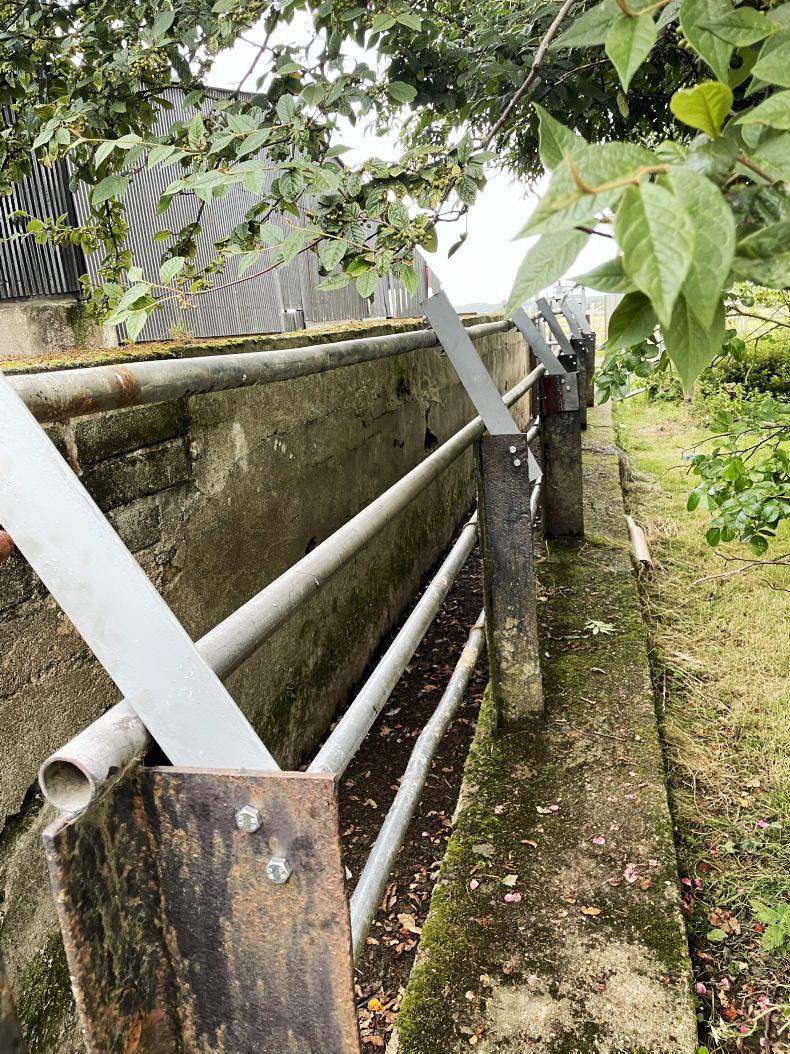
Donal Keane, bars on crush.
“I was reading the
Irish Farmers Journal recently and a featured farmer was standing close by his crush. I noticed that his top bar had recently had another bar added to the crush,” he said.
“It looked like a neat job and inspired me to do something similar with my own crush. I had most of the materials on the farm already and only needed a few extra pieces of angle steel.
“It took a few days to complete, I serviced my crush anti-backing barrier and crush gate as well.”
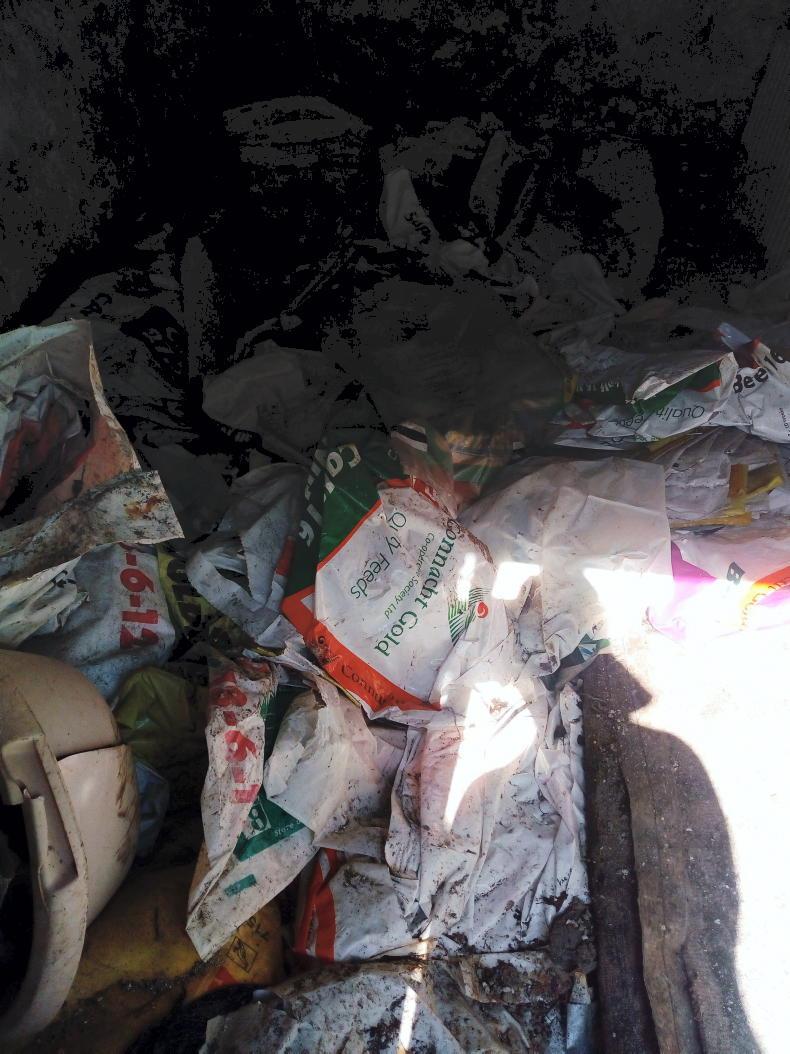
Rosalie Jordan, clearing up.
Rosalie Jordan from Skreen, Co Sligo, sent in a photo of her farm safety tip.
“Following the transfer of the farm from father to son, we set about clearing away everything that had been kept for decades ‘just in case’,” she explained.
The picture shows a small shed full to the brim with old, worn and torn farm bags kept to fill with turf and a few other items, long past their usefulness.
“The shed is now clean and clear, along with some other sheds which have also been emptied and washed down. And the farm is ready for the next phase – cutting back overgrowth, clearing pathways and installing some shelving/ hanging rails to store items more effectively,” said Rosalie.
Taking the lifting out of cleaning

Edward Butler, wheeled trolley.
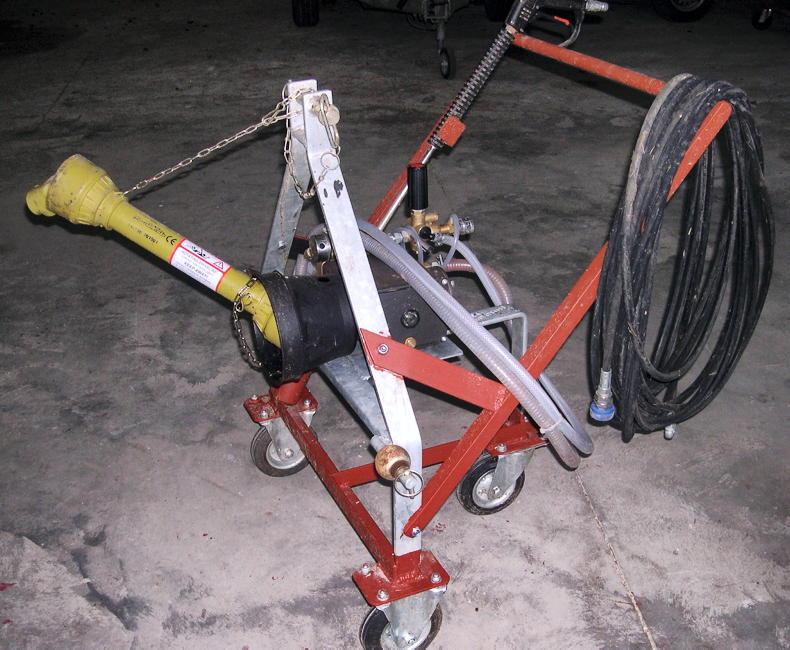
Edward Butler, powerwasher frame.
Edward Butler from Thomastown, Co Kilkenny, submitted several examples of how he has improved manual handling on his farm to avoid injury and accidents.
The first was a simple attachment for the PTO power washer to take the back-breaking work out of cleaning up the farm.
“Anyone who owns such a machine can testify to the weight and difficulty attaching it to the tractor. By simply adding a small frame with casters, the washer can be wheeled to and from where it’s needed and attaching it to the tractor no longer requires lifting and dragging by the farmer,” he explained.
Edward also submitted his idea of using a heavy-duty pallet fitted with casters to help with attaching the sprayer to the tractor.
“Some of the most common tasks on the farm can be the most dangerous. The everyday jobs that we think we can do with our eyes shut can often be the ones that result in serious injury. Attaching implements to a tractor is one such job that a slight misjudgement or momentary loss of concentration can result in a lifetime of regret,” he said.
Using his wheeled pallet, Edward now has a simple solution to lining up and attaching a sprayer to the tractor.
“This mobile frame can also be used for other farm equipment such as fertiliser spreaders, cement mixers and toppers etc. When the attachments are no longer needed, they can be safely stored by pushing them out of the way until next time,” he told the Irish Farmers Journal.
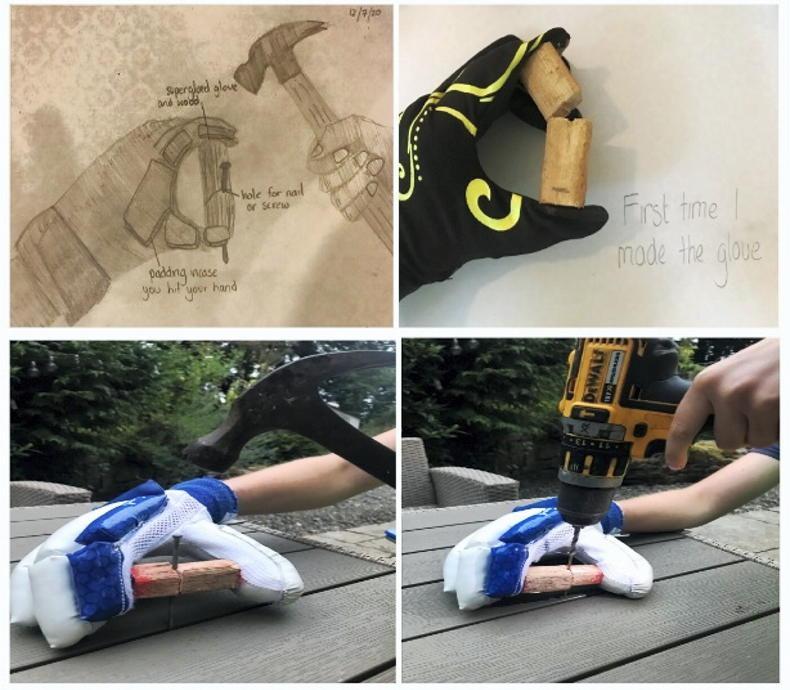
Alice Nicholson, safety glove.
Alice Nicholson from Co Meath designed a protective glove for anyone fencing or hammering, which will prevent injuries.
Her design incorporates a glove and a guide for screws or nails, which anyone can use. The inspiration came from her father, she told the Irish Farmers Journal.
“When my Dad was younger, he was always fixing the fences as sheep and cattle broke out constantly. But one day he was wasn’t concentrating and took a swing of the hammer a bit too hard. He hit his knuckle and he was in agony. Swearing and frustrated he walked home. ‘Fecking sheep!’,” recalled Alice.
Alice designed a padded glove which has two light timber guides attached to the thumb and forefinger. The nail or crew can be held using the timber and even if you miss with the hammer, your fingers will be out of the way.
“My family have been using my glove idea for over a year now and it’s saved a lot of hands,” Alice said. “Our hands are one of the most valuable tools to farmers.’’
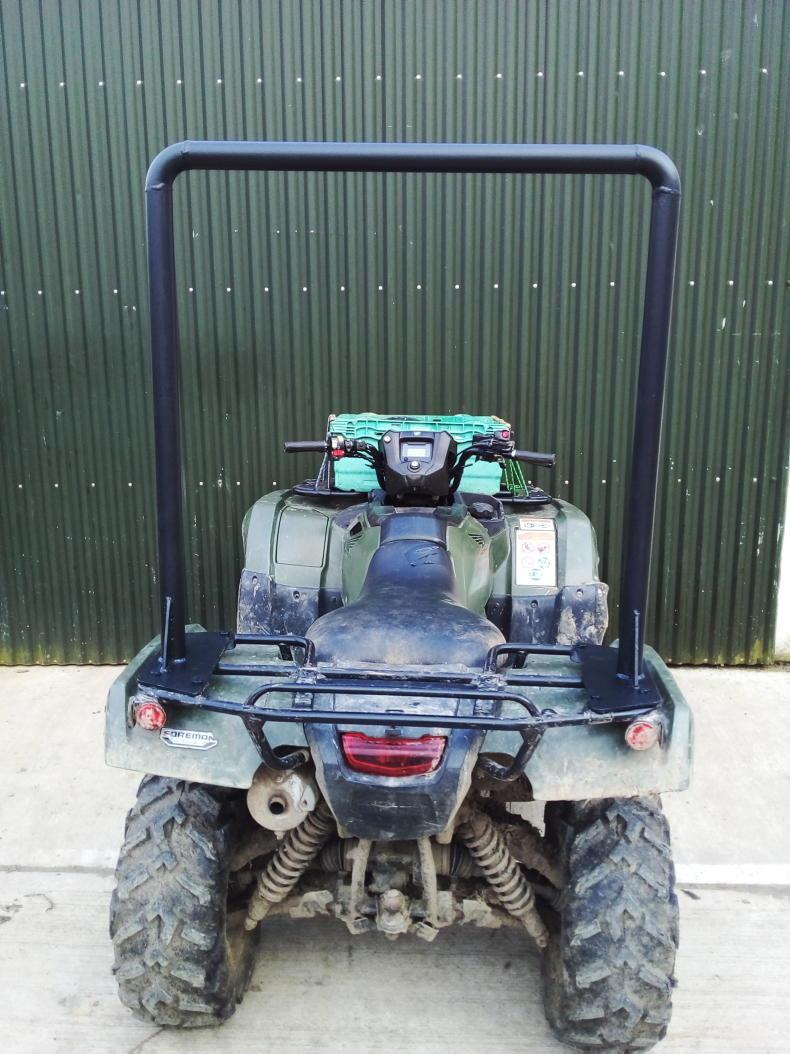
Alex Brown, quad roll bar.
Alex Brown from Caddagh, Co Monaghan, created a safety attachment for his farm quad.
“I was always aware that the quad could roll over on hilly and slippery ground when rounding up livestock so I made a roll bar for the quad which would make it safer in the event of a roll over,” he explained.
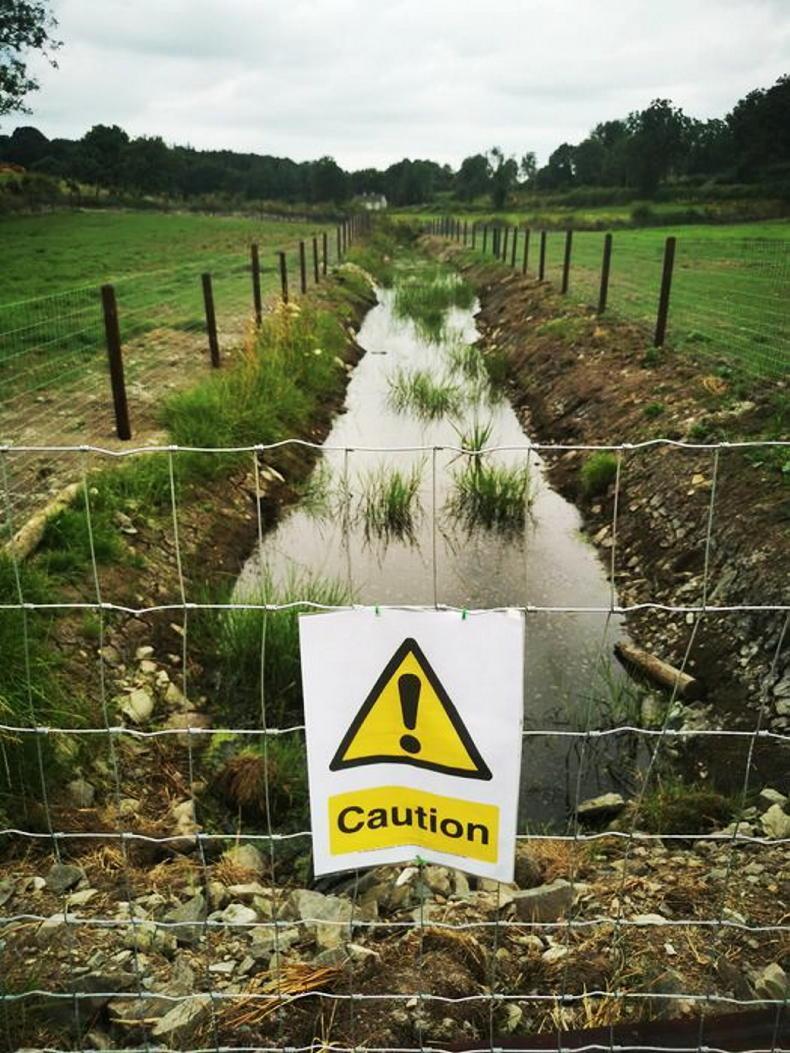
Shirley Hall, fenced river.
Shirley Hall from Drumeague, Co Cavan, submitted this photo of a safety improvement on the family farm.
“This part of the river at the Castle Lake, Bailieborough, Co Cavan, had got very slippy and dangerous to humans and animals in the wet weather so my husband got two and a half miles of it fenced off for safety,” said Shirley.
“We also plan to encourage wildlife. We have a family of ducks but they were camera shy when I took the photo!”

Pat Phelan, folding troughs.
Pat Phelan from Johnstown, Co Kilkenny, designed and made these folding meal troughs that can be placed on feed barriers. “They remove the need for getting into the pen to feed meal at the back to cattle and also remove the need to pour meal on the silage, which attracts vermin and crows which can carry disease to cattle, so safer for the farmer and the livestock,” he said. “They are lightweight and can also be securely locked when folded up.”
Winter bull accommodation

Douglas McKenzie, bull housing.
Douglas McKenzie from Dungannon, Co Tyrone used to house four bulls on an outfarm in various sheds.
“They were secure, warm and comfortable but I had to attend them every day to provide fodder and check on them,” he recalls. This took valuable time in the middle of a busy calving season and TB testing was also a hassle that involved moving each bull from the house to a crush on the outfarm yard.
To save time and improve safety, Douglas decided to incorporate the bull accommodation into a new shed he was building at the home farm.
“Now each bull has an individual pen with their own headlock. Daily feeding and health checking are quickly and safely done. Testing and vaccinations are easy to administer when the bull’s head is locked without the need to unsettle them,” he said.
With a top prize of €1,000 and two €500 prizes on offer in our #makeonechange safety competition, we’ve been inundated with entries from farmers showing the farm safety changes they have made on their farms.
The idea behind the competition is that if we can encourage small changes on thousands of farms across the country next week, we will make our farms safer and in turn keep our families safe.
With so many entries flooding in, we have decided to extend the closing date for the competition to 5pm on Tuesday 10 August 2021.

Lorcan Ward, dedicated bull paddock.
Lorcan Ward from Dunboyne, Co Meath told the Irish Farmers Journal that the biggest improvement to safety he has made on the farm was to dedicate a paddock solely for the bull to be kept in before and after the breeding season.
“The previous field he was kept in meant climbing over a gate to check the water trough and having to drive into the field if a silage bale was needed. Now the bull can be easily seen behind a large fence, making sure he can’t get out but, just as importantly, other animals can’t get in,” he said.
“The water trough is easily viewable. There is an electric fence at waist height to stop him damaging the fence. There is another entrance at the far side of the paddock where a barrier is accessible without having to drive into the field. This also serves as something for the bull to scratch on. From now until housing, there is zero need to enter the field anymore.”
Sliding gate for
cattle box

Kevin Carey, sliding gate.
Kevin Carey from Thurles, Co Tipperary, is a technical graphics and woodwork teacher and part-time beef farmer.
He combined his two passions to design this safety device aimed at making the loading and unloading of cattle from a box easier and safer for the farmer.
“The idea came to me when loading cattle into a box and one of them kicked back as I was closing the gate behind them. This opened my eyes to how simple an accident could happen and the dangers of walking up a ramp to close a gate on a box,” he told the Irish Farmers Journal.
“My idea is simple. A sliding gate which can slide left or right, depending on loading position or removed entirely if not needed.
“One person can herd the cattle into the box while another can slide the gate closed from a safe position, eliminating the need to walk up the ramp,” he explained.
“A lock on either side of the box will secure the gate and prevent it from sliding too far when closing. A top U-section rail and bottom half-moon profile slider allow the gate to move freely while offering maximum support. An extra external frame support is also fitted to the box where the sliding gate enters and exits the main frame.”
Carey said his design can be easily fitted in the manufacture stage of a new box or retrofitted to an older box.

Edward Earle, tidy yard.
Edward Earle from Gorey, Co Wexford, submitted a simple but effective tip that can be applied to all farmyards to improve safety.
“One thing that annoyed me for a while in the yard was time spent looking for farmyard tools. When you would find them, most of the time they would be on the ground,” he said.
“This tool organiser keeps the farmyard tools safe from falling over and potentially causing a trip hazard. It also allows everyone to know where each tool is.”

John Walsh, reflective tape.
John Walsh from Ballycahill, Co Tipperary, sent in this handy tip to prevent accidents in the yard.
He placed light reflective tape on the downpipe of the shed and on the barrier surrounding the gas tank. This is to prevent vehicles colliding with them.
Cattle crush improvements

Olwyn Owens, extra bars on crush.
Both Olwyn Owens from Athy, Co Kildare, and Donal Keane from Enniscorthy, Co Wexford, sent in examples of how they have improved their animal handling facilities.
Olywn added bars to the top of the crush to prevent the cattle from jumping up or out. “I’m working with cattle all year round and I wanted to make the handling facilities safer and avoid unnecessary injuries for both ourselves and the cattle,” she explained.
Donal also added some bars to his crush to improve safety.

Donal Keane, bars on crush.
“I was reading the
Irish Farmers Journal recently and a featured farmer was standing close by his crush. I noticed that his top bar had recently had another bar added to the crush,” he said.
“It looked like a neat job and inspired me to do something similar with my own crush. I had most of the materials on the farm already and only needed a few extra pieces of angle steel.
“It took a few days to complete, I serviced my crush anti-backing barrier and crush gate as well.”

Rosalie Jordan, clearing up.
Rosalie Jordan from Skreen, Co Sligo, sent in a photo of her farm safety tip.
“Following the transfer of the farm from father to son, we set about clearing away everything that had been kept for decades ‘just in case’,” she explained.
The picture shows a small shed full to the brim with old, worn and torn farm bags kept to fill with turf and a few other items, long past their usefulness.
“The shed is now clean and clear, along with some other sheds which have also been emptied and washed down. And the farm is ready for the next phase – cutting back overgrowth, clearing pathways and installing some shelving/ hanging rails to store items more effectively,” said Rosalie.
Taking the lifting out of cleaning

Edward Butler, wheeled trolley.

Edward Butler, powerwasher frame.
Edward Butler from Thomastown, Co Kilkenny, submitted several examples of how he has improved manual handling on his farm to avoid injury and accidents.
The first was a simple attachment for the PTO power washer to take the back-breaking work out of cleaning up the farm.
“Anyone who owns such a machine can testify to the weight and difficulty attaching it to the tractor. By simply adding a small frame with casters, the washer can be wheeled to and from where it’s needed and attaching it to the tractor no longer requires lifting and dragging by the farmer,” he explained.
Edward also submitted his idea of using a heavy-duty pallet fitted with casters to help with attaching the sprayer to the tractor.
“Some of the most common tasks on the farm can be the most dangerous. The everyday jobs that we think we can do with our eyes shut can often be the ones that result in serious injury. Attaching implements to a tractor is one such job that a slight misjudgement or momentary loss of concentration can result in a lifetime of regret,” he said.
Using his wheeled pallet, Edward now has a simple solution to lining up and attaching a sprayer to the tractor.
“This mobile frame can also be used for other farm equipment such as fertiliser spreaders, cement mixers and toppers etc. When the attachments are no longer needed, they can be safely stored by pushing them out of the way until next time,” he told the Irish Farmers Journal.

Alice Nicholson, safety glove.
Alice Nicholson from Co Meath designed a protective glove for anyone fencing or hammering, which will prevent injuries.
Her design incorporates a glove and a guide for screws or nails, which anyone can use. The inspiration came from her father, she told the Irish Farmers Journal.
“When my Dad was younger, he was always fixing the fences as sheep and cattle broke out constantly. But one day he was wasn’t concentrating and took a swing of the hammer a bit too hard. He hit his knuckle and he was in agony. Swearing and frustrated he walked home. ‘Fecking sheep!’,” recalled Alice.
Alice designed a padded glove which has two light timber guides attached to the thumb and forefinger. The nail or crew can be held using the timber and even if you miss with the hammer, your fingers will be out of the way.
“My family have been using my glove idea for over a year now and it’s saved a lot of hands,” Alice said. “Our hands are one of the most valuable tools to farmers.’’

Alex Brown, quad roll bar.
Alex Brown from Caddagh, Co Monaghan, created a safety attachment for his farm quad.
“I was always aware that the quad could roll over on hilly and slippery ground when rounding up livestock so I made a roll bar for the quad which would make it safer in the event of a roll over,” he explained.

Shirley Hall, fenced river.
Shirley Hall from Drumeague, Co Cavan, submitted this photo of a safety improvement on the family farm.
“This part of the river at the Castle Lake, Bailieborough, Co Cavan, had got very slippy and dangerous to humans and animals in the wet weather so my husband got two and a half miles of it fenced off for safety,” said Shirley.
“We also plan to encourage wildlife. We have a family of ducks but they were camera shy when I took the photo!”

Pat Phelan, folding troughs.
Pat Phelan from Johnstown, Co Kilkenny, designed and made these folding meal troughs that can be placed on feed barriers. “They remove the need for getting into the pen to feed meal at the back to cattle and also remove the need to pour meal on the silage, which attracts vermin and crows which can carry disease to cattle, so safer for the farmer and the livestock,” he said. “They are lightweight and can also be securely locked when folded up.”
Winter bull accommodation

Douglas McKenzie, bull housing.
Douglas McKenzie from Dungannon, Co Tyrone used to house four bulls on an outfarm in various sheds.
“They were secure, warm and comfortable but I had to attend them every day to provide fodder and check on them,” he recalls. This took valuable time in the middle of a busy calving season and TB testing was also a hassle that involved moving each bull from the house to a crush on the outfarm yard.
To save time and improve safety, Douglas decided to incorporate the bull accommodation into a new shed he was building at the home farm.
“Now each bull has an individual pen with their own headlock. Daily feeding and health checking are quickly and safely done. Testing and vaccinations are easy to administer when the bull’s head is locked without the need to unsettle them,” he said.




















 This is a subscriber-only article
This is a subscriber-only article










SHARING OPTIONS: